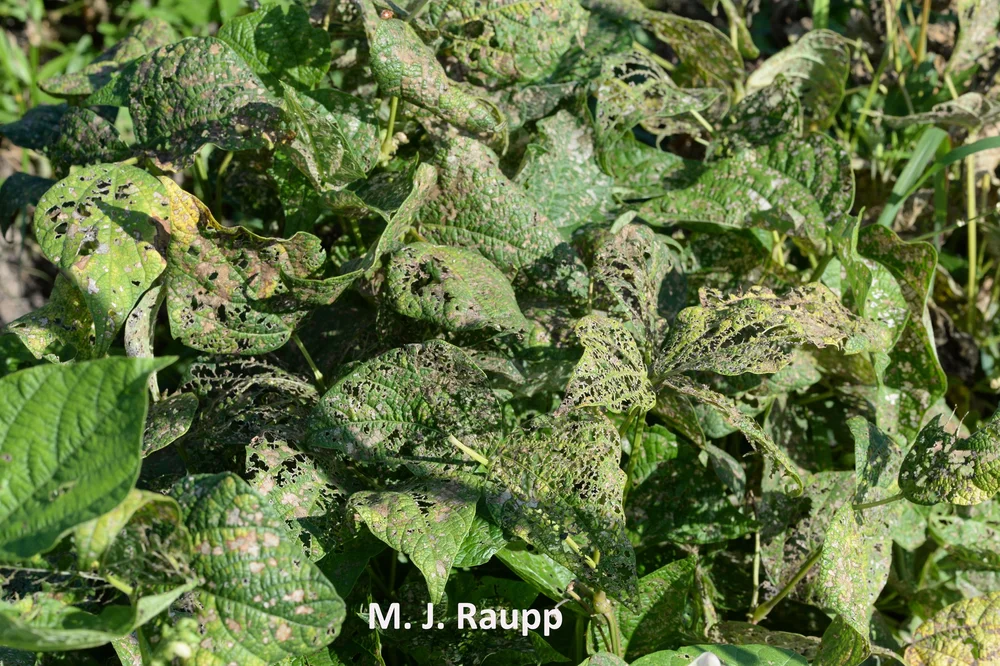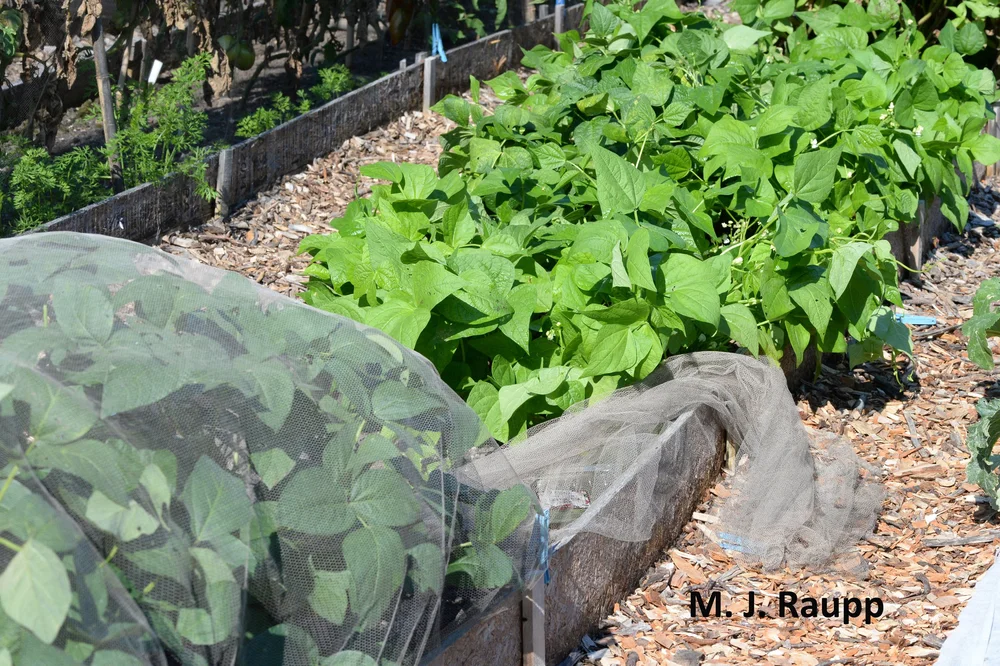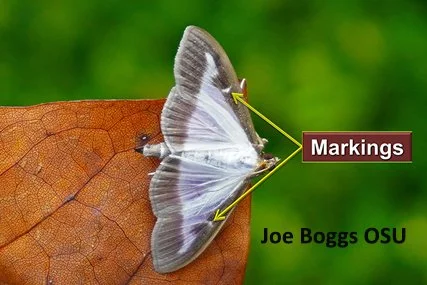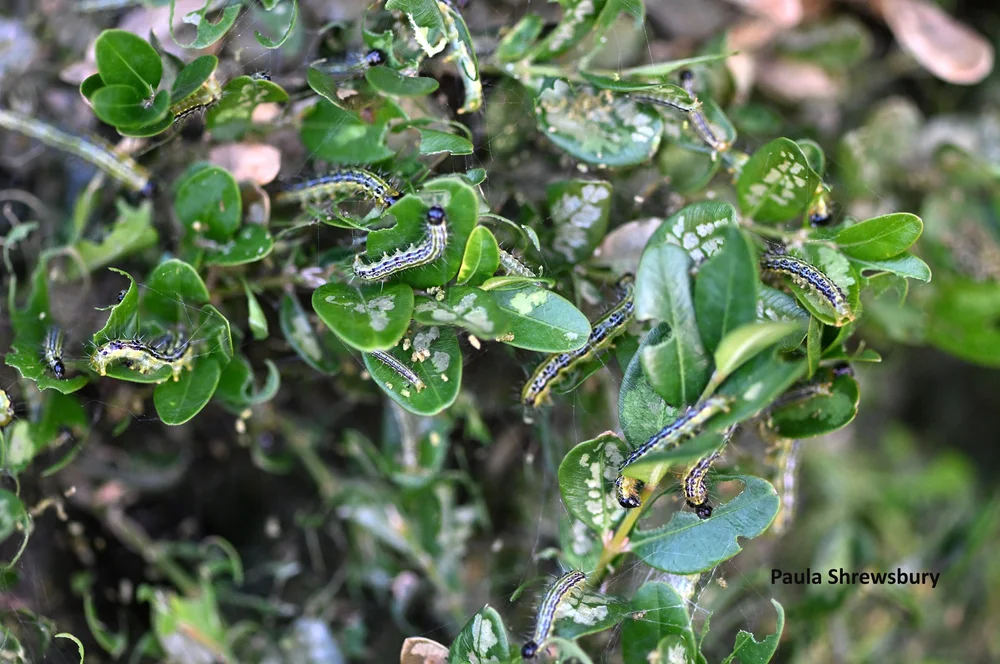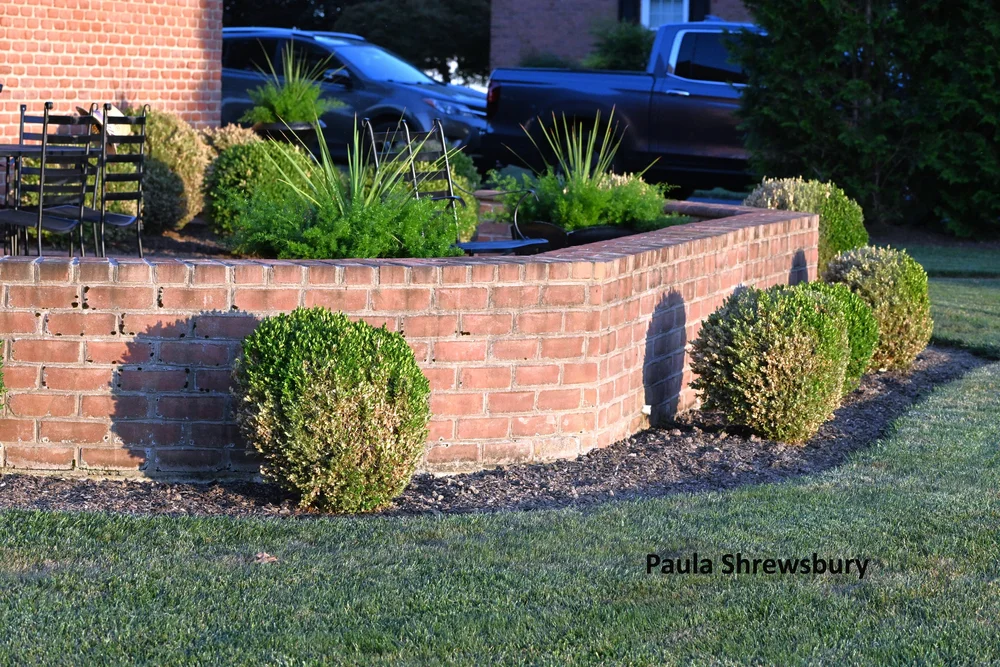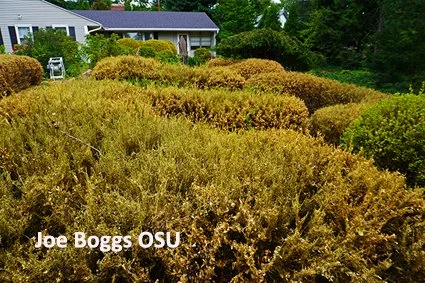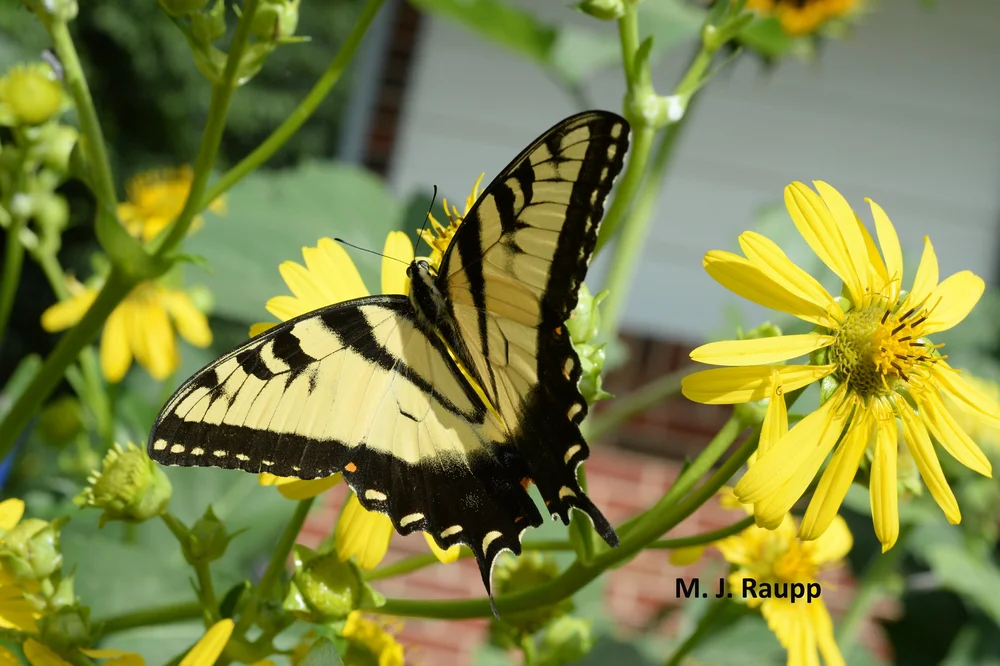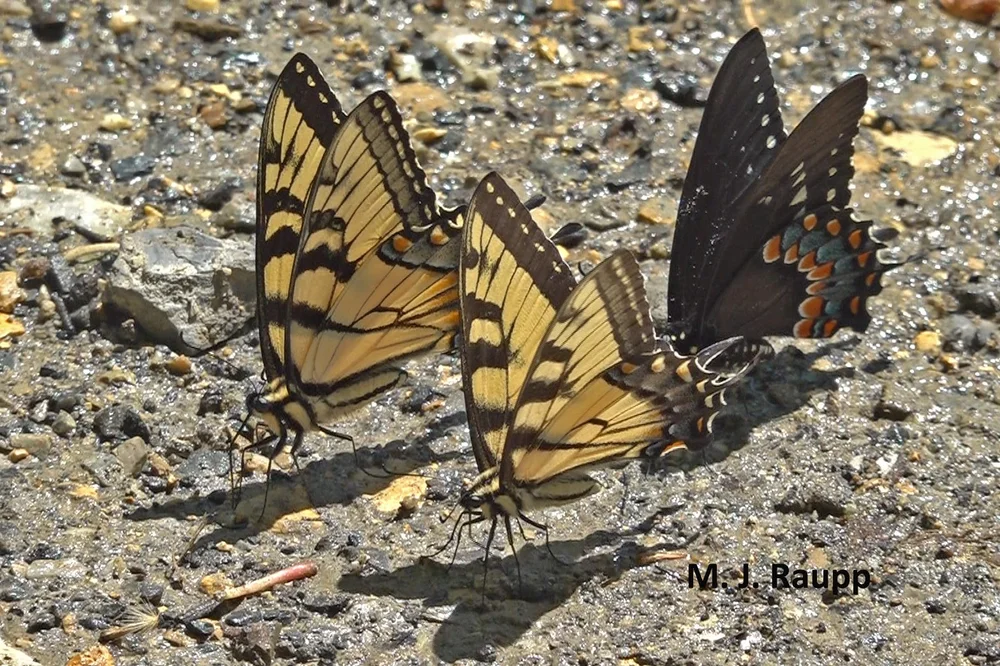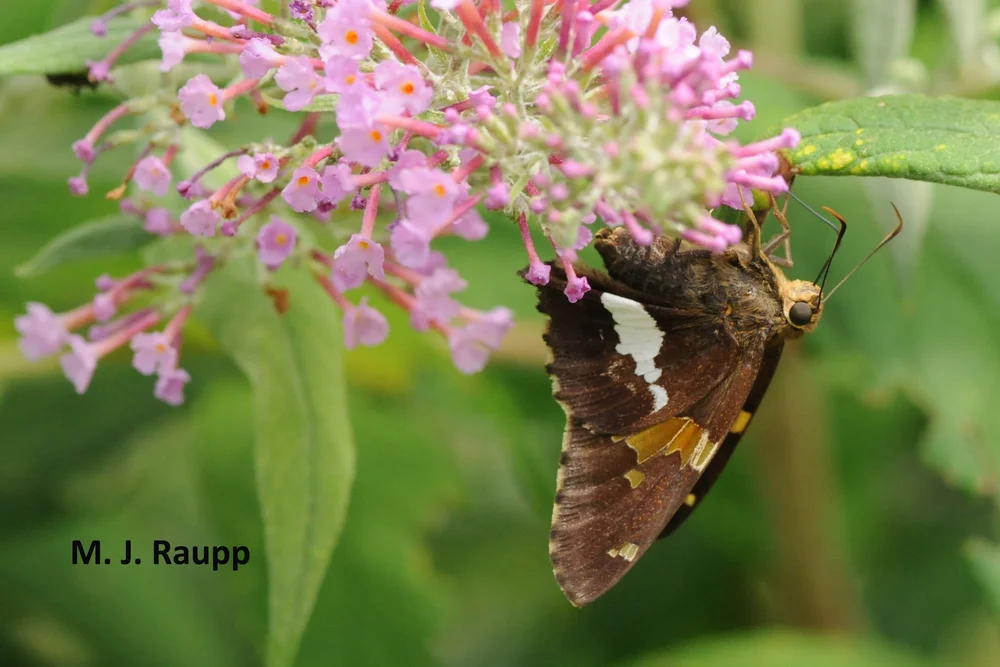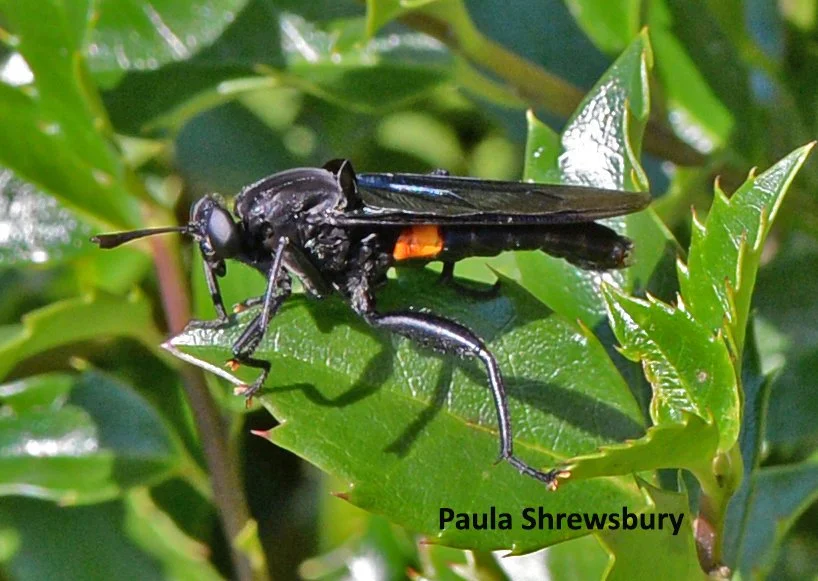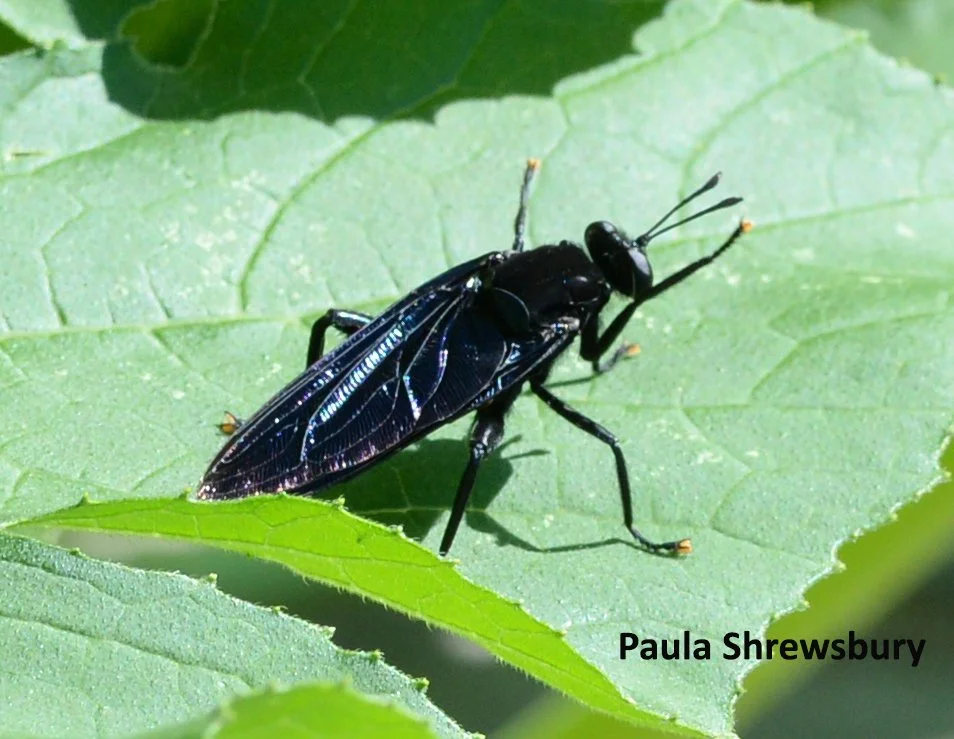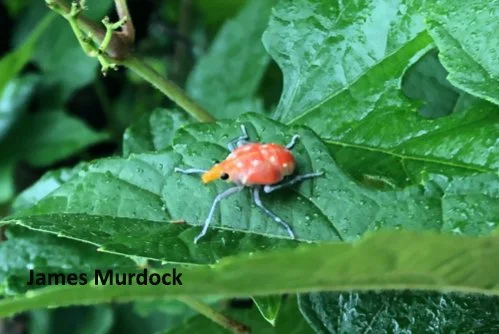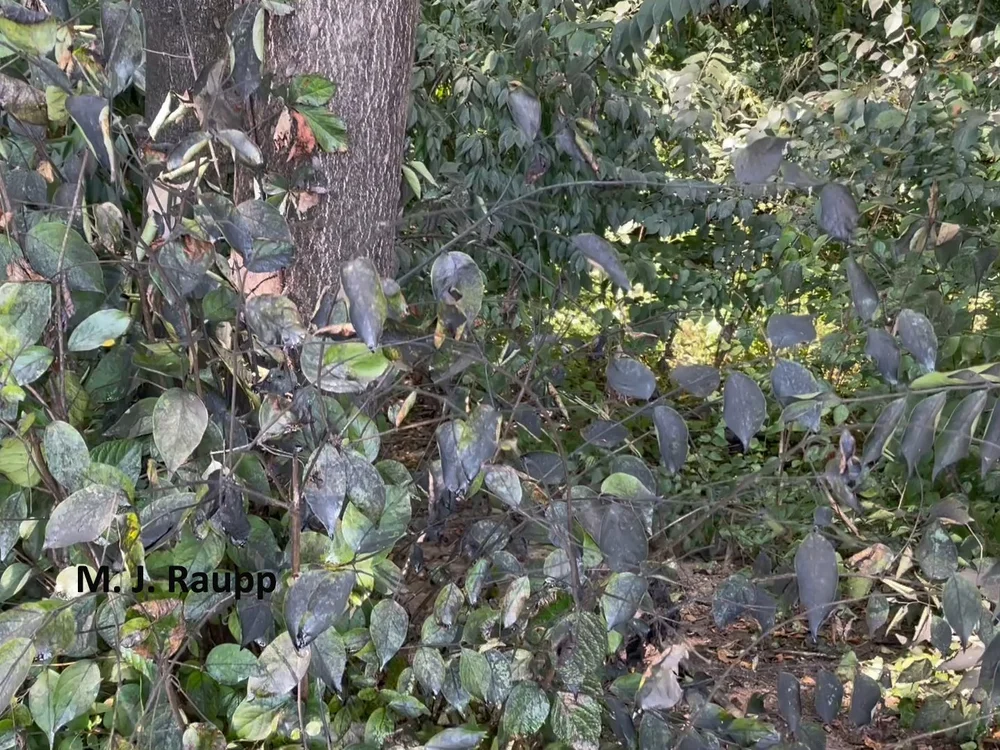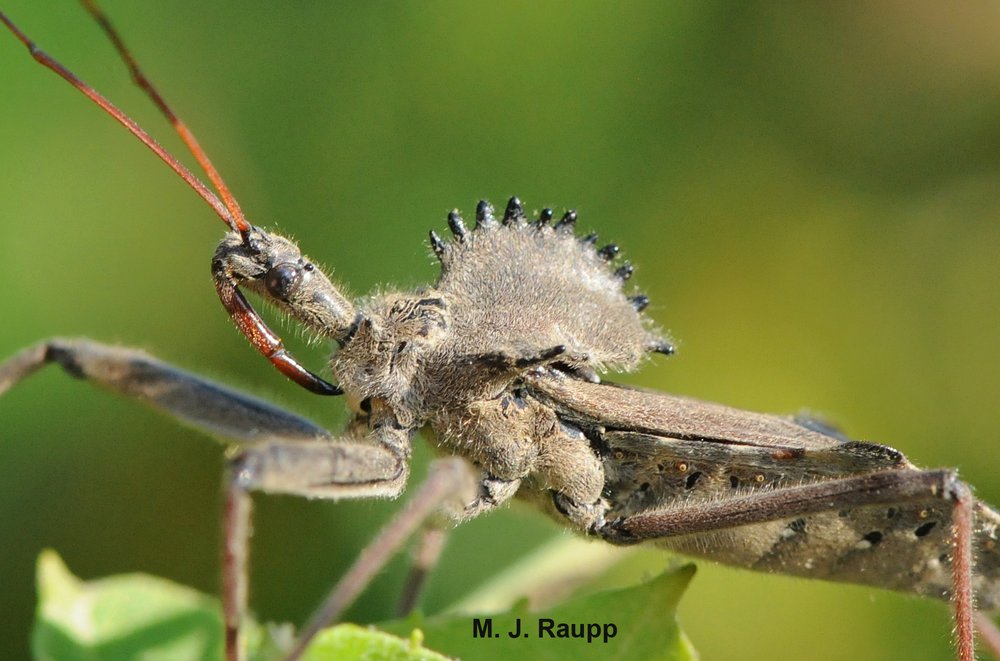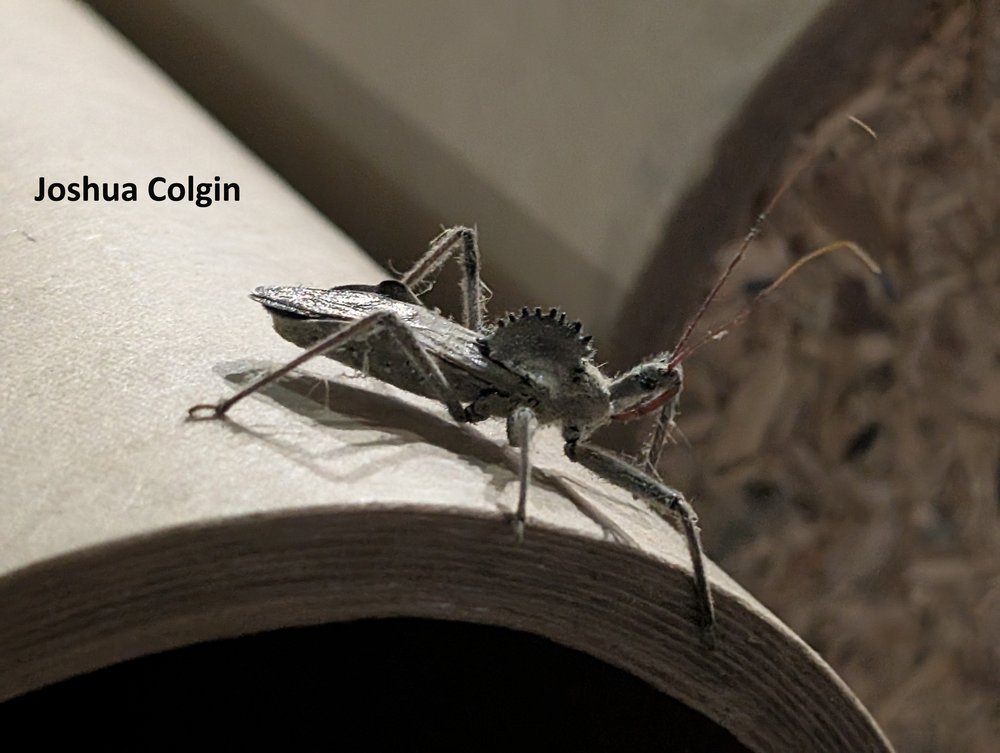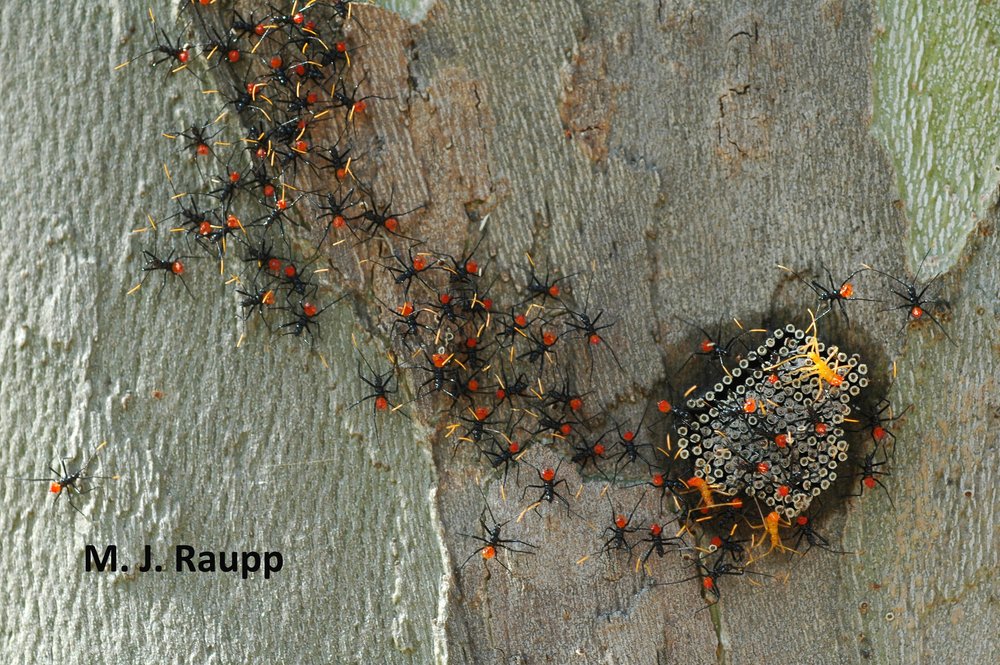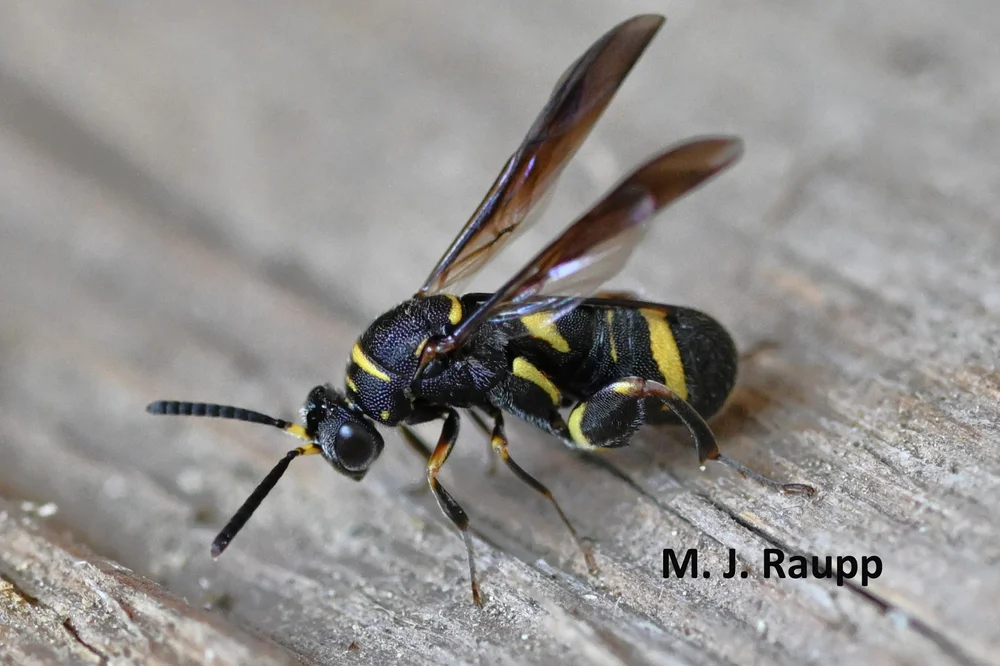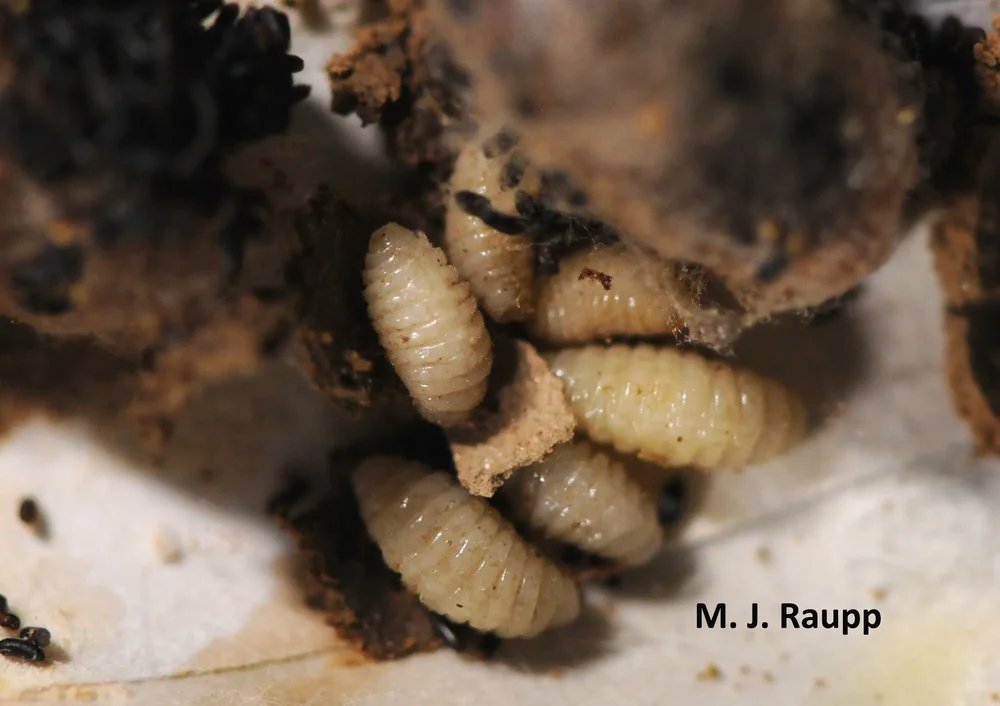Spider webs in the mist – Funnel weaving spider, Pennsylvania Grass Spider, Agelenopsis pennsylvanica
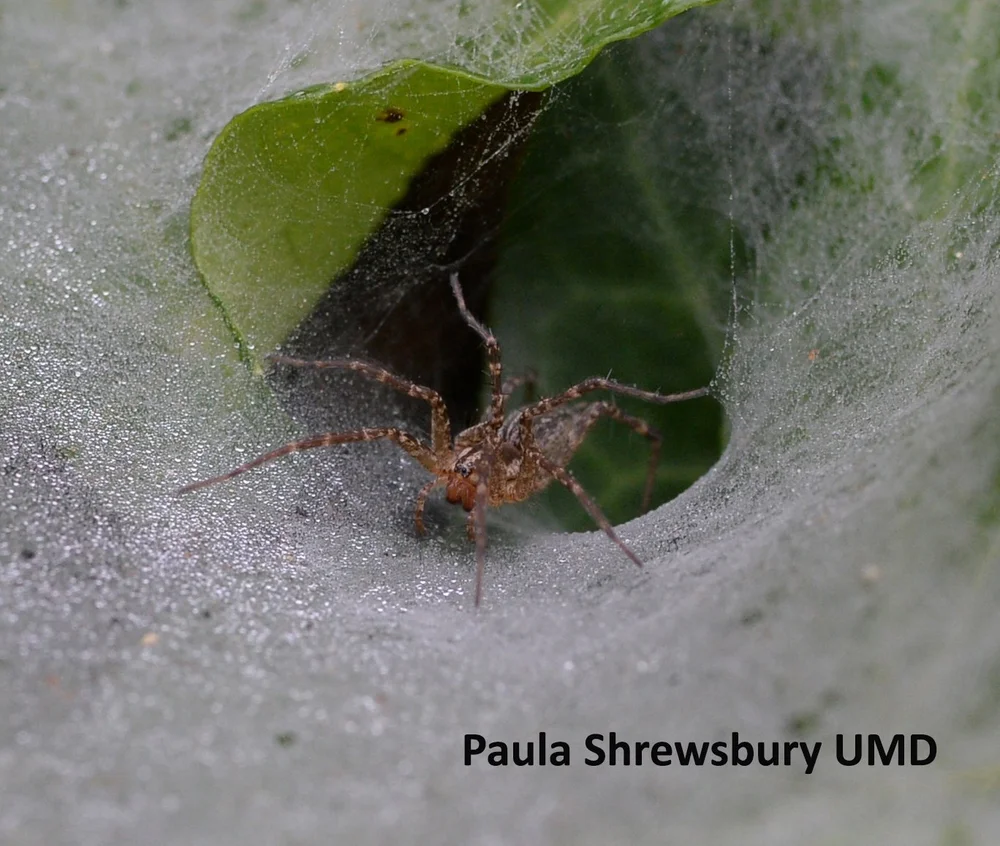
Ready to pounce on an unlucky passerby, the dappled Pennsylvania Grass Spider waits in the mouth of her funnel. Paula Shrewsbury image
Delightful meteorological events mark the transition from summer to autumn in the Mid-Atlantic region. Fog created by small water droplets suspended just above the ground condense on strands of spider silk as moist air cools. Morning light reveals numerically astounding and perhaps somewhat disturbing presence of spiders whose webs usually go unnoticed in the landscape. On one such misty morning my neighbor’s pachysandra and boxwood plants were festooned with more than a dozen gossamer webs. The webs were not the typical vertical orbs of concentric circle supported by radial strands like those of black and yellow garden spiders, spotted orb weavers, or marbled orb weavers we met in previous episodes. Rather, these webs consisted of horizontal 8 by 12 inch sheets each bearing a small remarkably round funnel at one end. The proprietor of the web, a handsome dappled brown and tan spider, often perched near the mouth of the funnel. My attempts to photograph these beauties were regularly thwarted by the agile spider able to disappear down the funnel in the blink of an eye.
When threatened by a predator or bug geek, the funnel weaving spider can disappear down its funnel in hole in the blink of an eye.
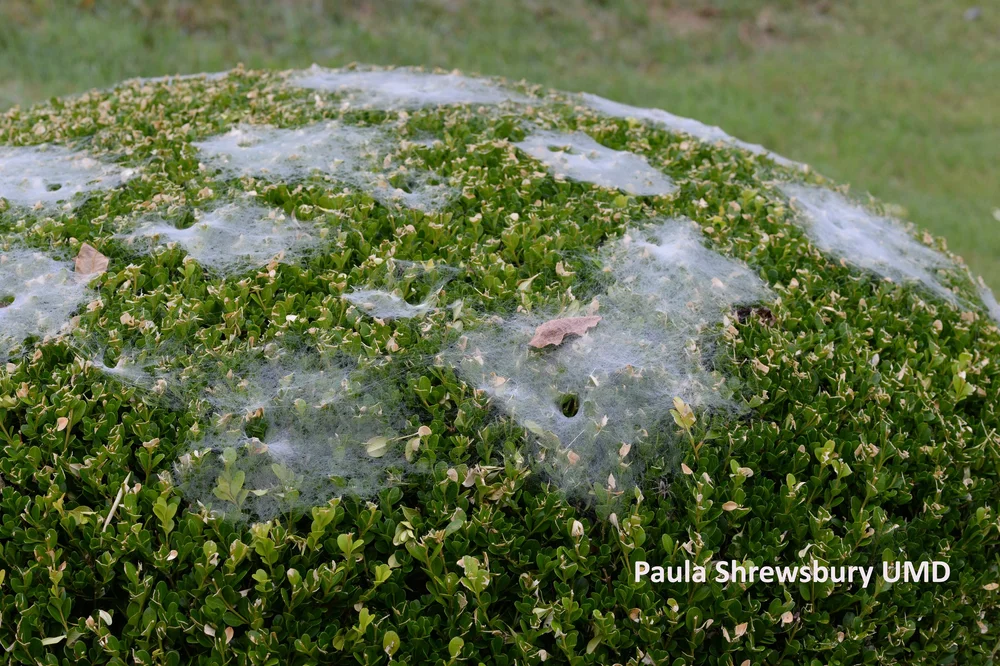
A foggy morning mist reveals the handiwork of funnel weaving spiders on a small boxwood shrub in a neighbor’s yard. Paula Shrewsbury image
Funnel weaving spiders, a.k.a. grass spiders, are often confused by name with their more famous and perfidious relatives the funnel web spiders. The bite of the Australian funnel web spider is potentially deadly to humans whereas the bite of Agelenopsis pennsylvanica, the Pennsylvania Grass Spider, is deadly only to their tiny insect prey. It is difficult to image how a human could be bitten by these shy spiders. Despite the ability of the web to capture droplets of fog, silken strands of funnel weaving spiders cannot snare small insects. They lack the sticky polymer found on the bug-catching strands of spider webs like those large orb weavers. Instead of trapping prey, funnel weaving spiders rely on a lightning fast attack and fang-strike to immobilize hapless victims that blunder onto their web. Like many other arthropods including the praying mantis and black widow spider, the female Pennsylvania Grass Spider engages in sexual cannibalism. The she-spider often eats her mate. Why does she do this? Is she grumpy or her suitor’s performance fail to meet expectations? In a clever study scientists discovered that hungry and particularly aggressive females tended to be cannibals. More importantly, the cannibalistic females produced heavier egg cases and the eggs within each case experienced increased success of hatching. If you are female Pennsylvania Grass Spider, it pays to eat your mate. So, for humans on foggy autumn morning enjoy the handiwork of funnel weaving spiders, but if you are a male funnel weaving spider think twice about who you date.
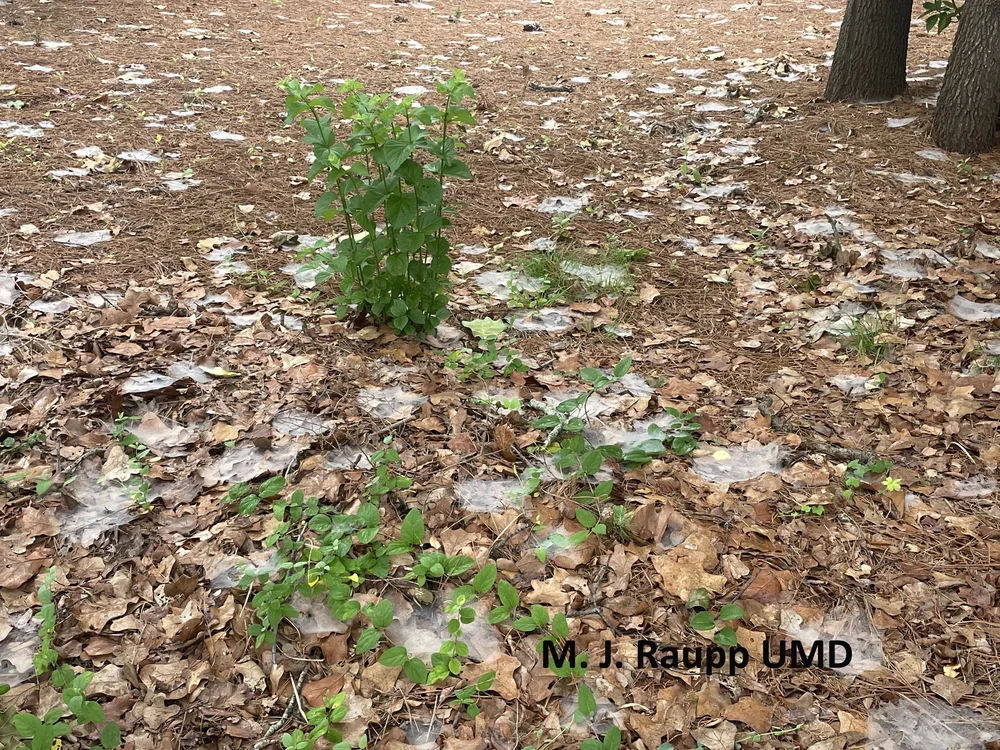
Watch your step. A morning mist reveals just how many spider webs are in a landscape. Mike Raupp image
Acknowledgements
Bug of the Week thanks non-cannibalistic Dr. Shrewsbury for photographing and wrangling spiders for this week’s episode and Dr. Shultz for providing the identification. Thanks to Kaitlyn McGrath inquiry about mysterious webs which provided inspiration for this episode. Two excellent references “Some Commonly Encountered Pennsylvania Spiders” by Steve Jacobs and “Sexual cannibalism is associated with female behavioural type, hunger state and increased hatching success” by Aric Berning and colleagues were consulted.
This post appeared first on Bug of the Week

